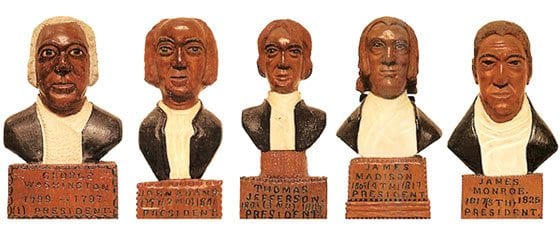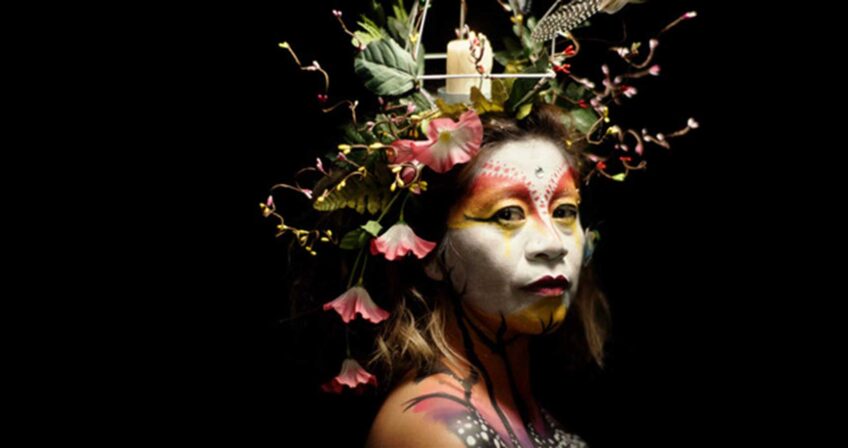
ATLANTA — One of Ulysses Davis’ granddaughters has said the artist used to sit in front of the television on election night, a block of wood in hand, ready to start carving a bust of the winner once the election was called.
Until his death in 1990, Davis added each new president to the collection of 40 busts that has become his best-known work. The works are part of an exhibition called “The Treasure of Ulysses Davis” that opened last Saturday at Atlanta’s High Museum of Art.
Davis, a barber and self-taught woodcarver from Savannah, Ga., carved more than 300 wood figures, reliefs and pieces of furniture in his spare time between haircuts and in the evenings. Born in 1914, he started whittling as a child, and his works were nationally recognized by the late 1970s.
But most of them have seldom been seen outside his home state because Davis felt the collection, which he called his “treasure,” should be seen together. He sought to ensure this by asking that his family arrange for the King-Tisdell Cottage Foundation, an organization devoted to the preservation of African American culture and history in Savannah, to acquire a majority of the collection after his death.
“He understood that the body of work was important as a teaching tool and as an indication of what an African American man and someone without many resources could accomplish,” said Susan Mitchell Crawley, curator of folk art at the High. “It was especially important to him that children see it.”
The King-Tisdell Cottage Foundation acquired 236 carvings from Davis’ heirs and received two others as gifts. A majority of the approximately 115 works in the current show are pulled from that group. The rest are drawn from the High’s own collection and other private collections.
The show at the High, which runs through April 5, is the first major traveling exhibition of Davis’ art in more than 25 years and is representative of his entire body of work, including pieces with patriotic and religious themes, as well as sculptures inspired by African forms, fantastical creatures drawn from his own imagination, and a few functional items, such as walking canes and furniture.
Included in the show is the Garden of Eden, to which he was adding the finishing touches when he died of a heart attack. The gold-painted table has fruit-laden trees and an almost ridiculous looking
serpent, with gold horns and its tongue hanging out to the side, on top and a modernist Adam and Eve below, a four-edged blade hanging menacingly over their heads.
“He regarded this as his masterpiece and it combines a whole lot of different elements that he worked with throughout his life,” Crawley said, citing the use of contrasting textures, the religious theme and the serpent that closely resembles some of the imaginary beasts he carved.
The current show is notable, Crawley said, because it features a large number of Davis’ carvings inspired by African forms and his imaginary beasts. Few of those pieces have been included in previous shows of his work, perhaps because the political- and religious-themed works fit more neatly into what people consider folk art, she said.
After its stay in Atlanta, the Davis exhibition will travel to the American Folk Art Museum in New York, running April 21 through Sept. 6, before moving on to other national venues to be announced.
(Associated Press)






